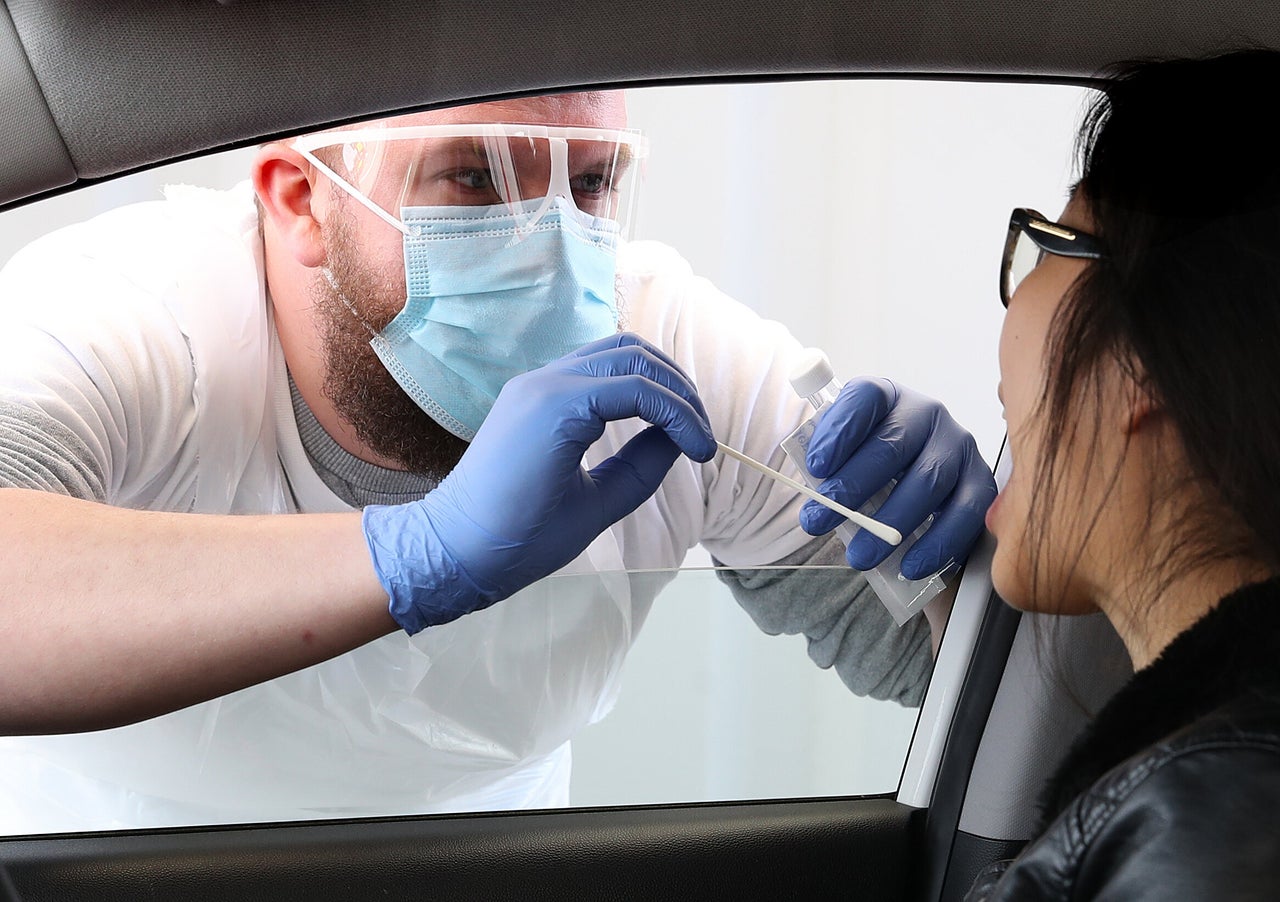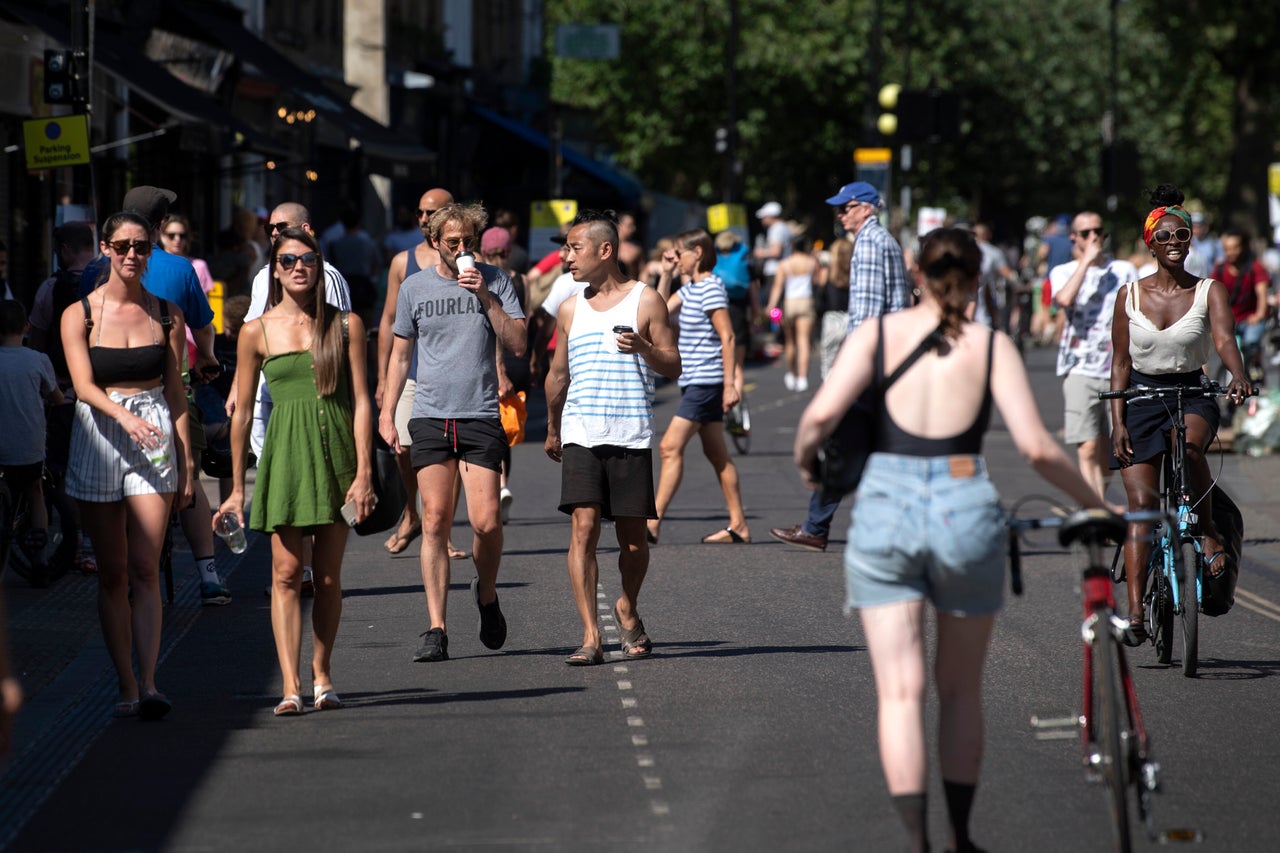Get the latest on coronavirus. Sign up to the Daily Brief for news, explainers, how-tos, opinion and more.
Back in mid-March, the head of the World Health Organisation (WHO) said the group’s key message was to “test, test, test” in order to prevent the spread of coronavirus.
Countries who followed the instruction from Tedros Adhanom Ghebreyesus have generally seen lower death tolls, with some – for example, South Korea and Singapore – keeping fatalities in single figures.
Yet government figures show more than 37,000 people have died in the UK. Months into the restrictions, the UK is looking for a way out of lockdown – and “test, track and trace”, or NHS Test and Trace as it has now been officially branded, could be the key.
The scheme was announced at Wednesday’s Downing Street press conference and launched at 9am on Thursday. But its flagship app, originally touted as being available from mid-May, is yet to arrive, meaning all the work will initially be manual.
So what does “test, track and trace” actually mean? Will we be able to return to “normal”? And why didn’t we do this sooner?
Here’s what you need to know.
What does ‘test, track and trace’ actually mean?
Testing
With the government setting itself huge targets – and an ensuing controversy over whether or not Matt Hancock’s 100,000-a-day had ever truly been reached – testing has been at the forefront of the national conversation about coronavirus.
On May 6, Boris Johnson set out a new target of 200,000 tests a day. The most recent statistics published by DHSC show that, in the 24 hours up to 9am on May 21, 128,340 tests had been conducted in 24 hours, with 67,861 people tested.

Initially reserved only for key workers, the coronavirus test has now been offered to anyone over the age of five with symptoms. The procedure involves a swab of the nose and the back of the throat, and can be taken either at home or at a drive-through testing centre.
Lockdown rules might have changed, but quarantine procedures haven’t. If you test positive, you’ll have to self-isolate for at least seven days, and any member of your household should isolate for 14.
Tracking
In order to tackle the virus, it’s essential that the government can track its movement through the general population – understanding both the rate of infection (the “R” number) and how many people have developed antibodies to the virus.
The BBC reports that the government is currently recruiting 20,000 households across the UK to be regularly tested for coronavirus, with ministers hoping for 300,000 to eventually take part.
Volunteers will be tested every week for the first five weeks, and then every month for a year, and will also answer more detailed questions from a health worker, with some being tested for antibodies.
Increased testing means health authorities should be able to piece together a better idea of what areas of the country are seeing a greater number of cases.
Tracing
So this is where the contact-tracing app we’ve heard so much about comes in.
Once someone has tested positive, working out where they’ve been and who they might have come into contact with will prove essential to slowing the spread of the virus.
The government has hired 25,000 contact tracers who will, as of now, ring you up and tell you that you’ve been in contact with someone infected.
They’ll eventually be working in addition to the new NHS app, though that is still being trialled on the Isle of Wight.
It tracks the user’s location and directly notifies people the user has previously been near to if they go on to test positive.
The app uses Bluetooth technology to connect devices that are physically close to each other, with the app registering the presence of another person.
If an app user develops coronavirus symptoms they register those with the app, which then alerts other app users they’ve been near.
Some 60% of the population will have to download the app for it to work, ITV reports.
Does it mean we’ll be able to go back to ‘normal’?

The date originally announced by the PM, June 1, coincided with the date the government wants some school pupils to return to education, and top scientists have made it clear that “a highly effective track, trace and isolate system” is needed before changes are made to lockdown. It has now been brought forward to May 29.
The absence of a fully-functioning system hadn’t stopped some lockdown measures – for example, being able to drive anywhere in England to exercise – from changing, but it is understood that for more major changes to be made, the new strategy will have to be well-established.
But test, track and trace doesn’t mean we’ll be able to return to life exactly as we once knew it.
Social-distancing measures show no sign of being lifted just yet, and while the app might be able to tell you that you were sat close to someone who had tested positive while on the bus or at a bar, it won’t actually prevent the infection from being spread in the first instance.
Why are Labour calling it something different?
The government have consistently referred to the new approach as “test, track and trace”, but top Labour party members have been using “test, trace and isolate”.
A spokesperson for Labour told HuffPost UK that the disparity between the two was more of a “semantic difference”, without a significant distance in policy.
They explained that the use of “isolate” more clearly defined what the public were actually supposed to do with the new technology, offering a clear instruction as opposed to the “slightly more woolly” slogan used by the government.
It’s not just the Labour Party who have chosen to take a slightly different course with its phrasing – the Welsh government has opted for “test, trace, protect”, while Scottish government has gone for “test, trace, isolate, support”.
Meanwhile in Northern Ireland, first minister Arlene Foster backed the language used by UK government, saying: “We need to test, we need to trace and we need to track where the disease is, because we are coming out of the peak.”
It had teething problems
The system, minus the app, is live now. But despite assurances from health secretary Matt Hancock that the new recruits had been supplied with “rigorous” and “detailed” training, there have been concerns that the programme has left thousands of new employees unprepared for the scale of the task ahead.
The Guardian spoke to some of the newly-hired tracers who described a “shambolic” training process with trainers instructing employees to watch YouTube videos in order to learn how to speak to someone who had been recently bereaved.
Some new employees reported spending days trying to log onto the new system, and were being paid for their time while waiting to be trained.
Despite concerns about the initial set up, the government have insisted that the “world-beating” system will be in place by the start of June.
Who is running the system?
Earlier in May the Department of Health and Social Care told the Financial Times that a “number of firms” had been used to recruit call handlers.
Hampshire-based public service provider Serco is the major recruiter being used by the government, and – according to FT – is being supported by a number of subcontractors such as Capita, which has been handed the task of recruiting almost 2,000 new contact tracers.
On Wednesday Serco was forced to apologise after accidentally sharing the email addresses of 300 contact tracers, potentially leaving the firm in breach of stringent data protection rules. The BBC reported that at least one member of staff was understood to have reported the incident to the Information Commissioner.
It’s not the first time Serco has come under fire for its handling of public sector contracts. In December, two of the company’s bosses were charged with fraud over an alleged electronic tagging scandal.
The firm was fined £19.2m by the Ministry of Justice after claims emerged that it had charged the government for electronically monitoring people who were either dead or in jail, or who had left the country.
Why haven’t we used this system before now?

You may well ask. On Wednesday, Labour leader Keir Starmer asked the PM why there had been “no effective” attempt to trace contacts of those infected with Covid-19 since March 12 “when tracing was abandoned”.
Johnson replied by stating that the new system would be in place by June 1, but did not go into details about why the UK hadn’t taken the approach over the previous months of lockdown.
Writing for The Conversation, Jimmy Whitworth – a professor of international public health at the London School of Hygiene and Tropical Medicine – said: “Testing and tracing is most feasible as an effective strategy at the start of an outbreak when there are just a few chains of transmission of the disease.
“But if this does not keep the epidemic under control, and if there is widespread community transmission, there will quickly be many cases and contacts.
“This is especially the case with a disease such as Covid-19, which is easy to catch, is quickly passed on after an infection sets in, and can infect some people without producing symptoms.”
At the Downing Street press conference on May 19, deputy chief scientific adviser Professor Dame Angela McLean was asked why community testing had ended on March 12, when the World Health Organisation had emphasised the need for as much testing as possible.
She said: “I think I would agree that at the time, with the testing we had, the right thing to do was to focus it on people who were really sick in hospital, so we knew who in hospital had Covid, so it was the right thing to do at the time.”
She hailed the “inspiring” work of countries such as South Korea, stating: “I think that is an experience that we are aiming to emulate.”
Is it working in other countries?
When it comes to test, track and trace, it’s probably fair to say that England has been relatively slow on the uptake.
Logistical challenges are of course presented on a bigger scale as the population increases, but Northern Ireland has already rolled out its telephone contact-tracing system while the Scottish government is currently in the trial phase. Welsh leaders have said they want their scheme in place by the end of May.
South Korea has been hailed in particular as a success story when it comes to closely monitoring the virus and comprehensively testing its citizens.
The nation had faced a significant outbreak in late January, and was among the first countries outside China to report a sharp rise in cases. By February 29, the nation had reached its peak of 909 daily infections, The Guardian reports.
By mid-March, up to 20,000 people each day in a population of 51.6m were being tested and receiving their results within 24 hours, and surveillance techniques – including CCTV camera records and credit card transactions – were used to issue alerts to the public about where infected members of the public had been before they tested positive.
In early May a new cluster of cases – linked to a man who had been on a night out in the city – sparked some concern of a second wave of the virus, but after testing on a massive scale authorities were able to announce that the outbreak was not as serious as first feared, according to the Korea Herald.
To date, South Korea has reported 264 coronavirus-related deaths.
Other nations, including Hong Kong, Singapore and Germany, have already implemented contact tracing strategies. According to official reports, they have announced four, 22 and 8,270 deaths respectively – a fraction of Britain’s total.
